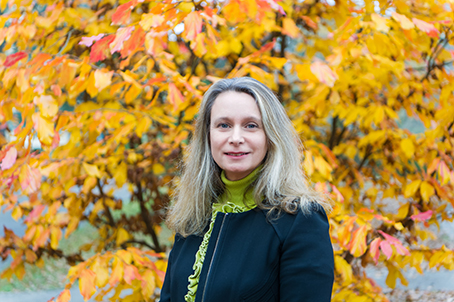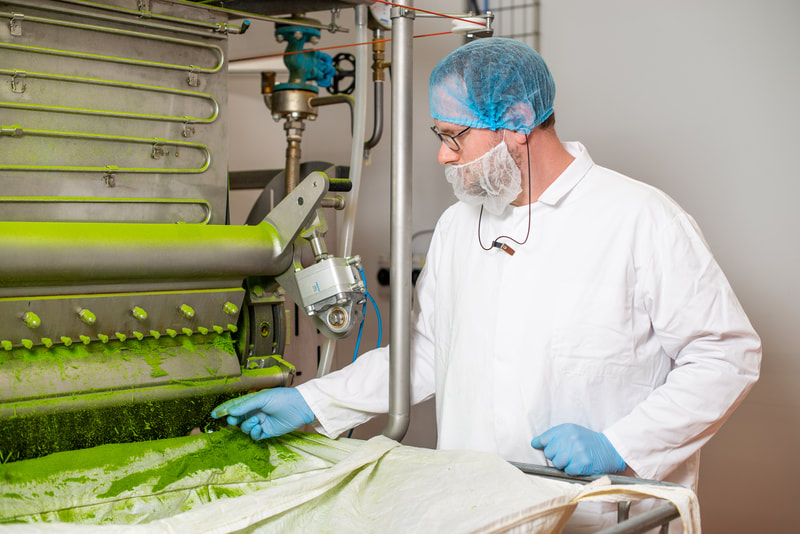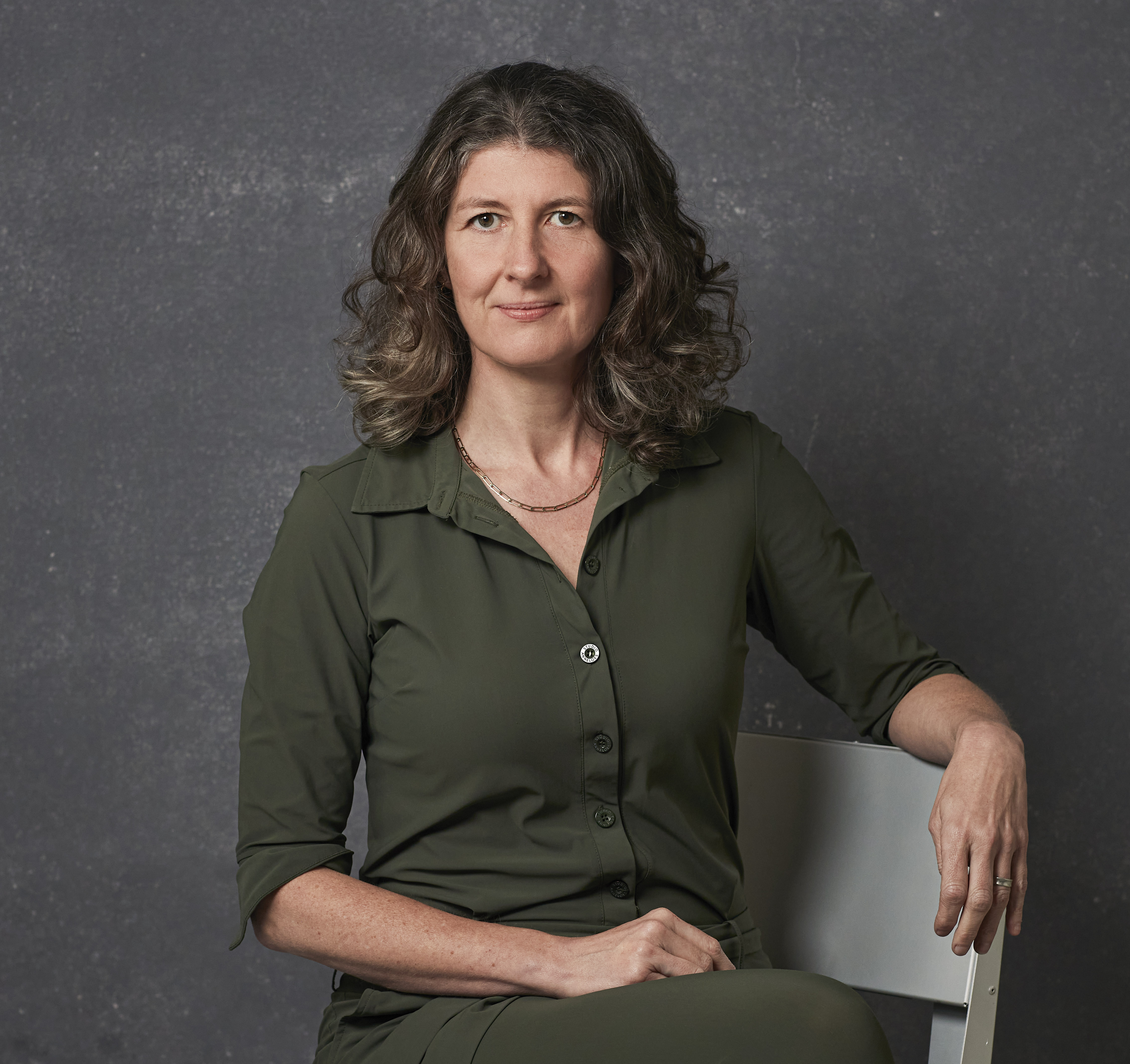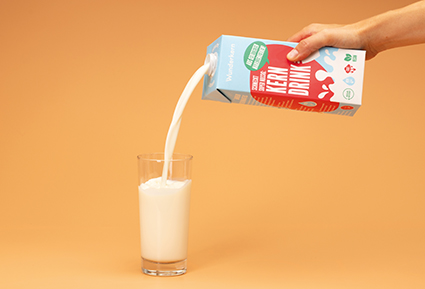

Talking Heads: Dollars and sense
With clickbait headlines proclaiming the death of cultivated meat, and some vegan brands closing, Louise Davis speaks with 10 financial experts to assess the real situation with regard to the funding and development of the alternative proteins industry
The alternative proteins market is no more immune to boom-and-bust cycles than any other tech industry – though is perhaps less volatile on this front than some other sectors (think crypto). Following a few years of wild valuations, record-breaking raises, and seemingly everyone deciding to have a go at being a venture capitalist, in 2022 the alt protein industry’s funding wheels fell off.
Naturally, politics and pandemics played a role in the ‘next-best-thing’ news stories turning into ‘another vegan one bites the dust’ headlines. And nobody would argue that bringing alt protein products to market is easy at any time. However, as the specialists featured throughout these pages explain, this current economic winter – and a new level of caution on the investment side – didn’t come about solely due to external factors. Indeed, as our experts reveal, following the cash now leads to a very different industry to that of the first generation of alt protein concepts.
One of the single-most defining factors for this market is scalability. Investment will no longer be awarded to ‘a great idea’ or novel scientific breakthrough; that idea now has to be proven to be scalable. A notable side effect of this is a shift in location of some investments; plowing money into equipment suppliers and solutions providers that will enable these great ideas to come to fruition, rather than investing in the ideas themselves.
A new breed of investor
The other ‘s’ that is determining funding decisions more than ever before is ‘sustainability’. A new breed of ethical impact investors and incubator hubs – some of them showcased here – is going a long way to transform the image of VCs, investors and accelerators as merely profit- and exit-focused paymasters. And as well as being altruistic, it’s a smart approach for the investors, too. A vegan startup will naturally look to secure funding from an organization that shares its cultural values. Although it’s a little early to demonstrate many fruits of these more synergistic-sounding partnerships (in part due to an understanding on all sides that players – investors included – need to be in this for the long haul), as you can read over the following pages, we may well be seeing another – steadier, different – boom shortly.

PLANT-BASED AND CELLULAR AGRICULTURE SOLUTIONS ARE BOTH FACING HEADWINDS AS TRADE TENSIONS AND SUSTAINABILITY SHAPE THE PRIORITIES OF INVESTORS AND GOVERNMENTS GLOBALLY
Good Startup is leading investment in the alternative proteins sector, and as Gautam Godhwani, Managing Partner, explains, this work is being driven by environmental awareness as much as it is economic viability. “Today, animal agriculture is 14% of global warming and the number one cause of biodiversity loss, ocean dead zones, and species extinction. It consumes 83% of our farmland to provide just 18% of our calories. Alternative proteins provide the only credible path forward to create a substitute for animal products.”

So, what are the type of technologies that Godhwani feels can make the biggest difference here? “Startups are creating solutions to our food system that use up to 90% less energy, as well as 99% less land and water,” he states. “New School Foods from Canada is one example of a company employing a unique texturization platform. Plant-based salmon – its beachhead product – offers delicious taste and texture, and it looks and cooks like conventional salmon. The company has developed scalable technology to diversify its product range, catering initially to North American consumers, followed by global expansion. Startups such as this – taking a platform technology approach to solving the existing issues within our food system – are likely to make the biggest impact.”
Investment strategy
With regard to specific types of alt protein solutions, Godhwani explains that Good Startup looks for companies that drive breakthrough innovations, fundamentally improving the food system by offering substitutes to animal agriculture. “To that end, plant-based, fermentation, and cultivated technologies all have a role to play,” he adds. “Plant-based foods excel in providing nutrition with a mix of vitamins and minerals. Fermentation is highly suited for tailored protein as well as biomass production, while cultivated technologies can deliver the same taste and texture that consumers demand in these foods.”
Alternative proteins provide the only credible path forward to create a substitute for animal products
A prominent member of Good Startup’s portfolio is addressing precisely those issues, as Godhwani explains. “Lypid has done a wonderful job of creating a tunable, plant-based fat technology that we now see in products such as the firm’s pork belly and meatballs. These offerings have seen success in the Asia market, and will now also be available in North America. The transition from B2B to B2C, as well as from Asia to North America, represents solid execution from the team to offer this product globally where there is demand.”
On the global stage, Godhwani notes that geopolitical factors are having several effects on the financial landscape. “With two ongoing wars globally, we are witnessing a significant impact on supply chains,” he explains. “The recent surge in inflation has further raised prices for alternative protein products that were already struggling to reduce prices, particularly with subsidies provided to animal products. Robust supply chains and access to raw materials at reasonable prices are crucial for the success of plant-based products. Cellular agriculture, on the other hand, needs significant ongoing investment as well as a favorable regulatory environment, requiring global communication and cooperation. Both are facing headwinds as trade tensions and sustainability shape the priorities of investors and governments globally.”
Despite these complexities, Godhwani reports that a number of collaborations and partnerships are driving major innovation in the alternative proteins space. “It is heartening to see governments step up to support the sector, even in the face of resistance in certain regions,” he comments. “Collective investment in alternative proteins from governments has crossed US$1 billion globally, and we see cultivated meat approvals in Singapore, the USA, and Israel. Just a few years ago, the progress we see today from both the capital and regulatory perspectives appeared distant, but it is now a reality. These regulators are also the bellwether for other markets around the world, so we expect to see significantly more activity in the coming years.”

THE ENTIRE FOOD INDUSTRY THAT RELIES ON ANIMAL-BASED PROTEINS OR FUNCTIONAL INGREDIENTS WILL BE DISRUPTED IN THE NEAR FUTURE
An early pioneer of alt proteins investment and longtime vegan, Beyond Impact’s Claire Smith has witnessed a great deal of change in the sector and, as she explains, she’s adjusted her own approach accordingly. “In the early days of 2017, I was focused on alt-protein companies creating meat and dairy substitutes for the vegan/vegetarian lifestyle market. The thesis then focused on the potential for these products to disrupt the conventional food industry by offering convenient, animal-free options.
“I now prioritize investments in B2B biotech companies focused on novel methods of producing proteins, fats, and other ingredients through precision fermentation, cell culturing, and other synbio platforms. I now invest further upstream, where core IP and technological capabilities are being developed.

“My current investment lens looks at companies for B2B clients (food, skincare, materials) with the appeal and potential to disrupt animal industrialization through cost-competitive, functional, and sustainable ingredients enabled by their proprietary biotech platforms.”
Animal-free investing
When it comes to alt proteins, specifically, Smith details a clear-cut strategy for those seeking her investment. “We don’t invest in anything that relies on animals, including insects or companies that serve the animal/fish feed industry. Not only are insects sentient creatures that deserve our respect and consideration, but insect-based protein production may also not be as sustainable,” she says.
And although there are several opportunities she isn’t remotely interested in, Smith describes herself as technology agnostic. “Ingredients and materials can be synthesized/produced from various technologies such as plant-based, biomass fermentation, molecular farming, algae fermentation, cellular agriculture, gas fermentation, precision fermentation, etc. We evaluate each on its own merits with the aim of identifying the right application that provides a healthier, cleaner, and environmentally friendlier substitute that can reduce costs (to achieve price parity) and provide the right taste, texture, and feel.”
With that in mind, what areas does Smith predict as having the most potential to achieve those goals? “The entire food industry that relies on animal-based proteins or functional ingredients will be disrupted in the near future, as reliance on animals is inefficient from an environmental, supply chain, and financial standpoint,” she notes. “As some of these companies crack the code with scale and technical challenges, production of non-animal-derived ingredients, including proteins, will flourish and impact the meat, dairy, seafood, and pet industries. We are already seeing strong adoption in the dairy and meat alternatives segments, which will rapidly rise as these startups crack the cost-parity challenge. Our analysis is not only based on consumer adoption, but we are also seeing huge interest among large ingredient, food, meat, seafood, and dairy companies.”
This fundraising winter is a blip and will clear out a lot of bad apples (both investors and entrepreneurs)
Smith reveals that Beyond Impact is currently closing transactions with two companies, one in South Korea and another in Switzerland. “One focuses on extracting proteins and other high-value functional ingredients such as fibers from spent brewers’ yeast with some strong commercialization commitments,” she reveals. “The other one has strong IP/patents that can fundamentally change the reliance on growth factors, FBS, and FBS-free media required for cultured meat production. Hence, it can make cultivated meat production closer to price parity with fully cultured meat products without a hybrid approach.”
Commenting on today’s investment market, Smith adds, “This fundraising winter is a blip, which I can say with confidence as I have survived and lived through the 1987 crash, the Asian crisis, the dot-com bubble, and the 2008 global financial crash. I am here for the long haul from an impact standpoint and value/patient investment standpoint. This will clean out a lot of bad apples (both entrepreneurs and investors) from the market, especially those driven by hype and not by fundamentals.”
Observing many ‘bad apples’ over the years means Smith can easily detail how her ethical and transparent approach differs. “We are absolutely against animal-derived ingredients and products in the alternative protein landscape, and we go to extreme lengths with our companies to incorporate terms and clauses that they are not conducting animal testing, selling to the animal/fish feed industry, or selling hybrid (animal-derived meat combined with alternative meat) products. We are the only animal-free Article 9 SFDR fund, which shows how nascent the climate financing space is in recognizing the connection between climate change,
the biodiversity crisis and the economy’s current dependence on animal-derived products and ingredients.”

COMPANIES WITH A STRONG TECHNICAL PLAY COME WITH INHERENT RISKS, BUT THEIR IMPACT CAN BE ENORMOUS
For entrepreneurs looking to enter the alternative protein space, Bastiaan Gielink at Dutch impact investment organization Invest-NL, says he and his team prioritize “good technology with true impact potential and a strong team behind it. Furthermore, I think a credible pathway to commercial price parity is key”.
What type of solutions is he most interested in, then? “Personally, I like companies where there is a strong technological play,” he comments. “Although there are often inherent technological risks, their impact can be enormous.”

As 100% of Invest-NL’s shares are owned by the Dutch Ministry of Finance, Gielink explains that his team has to adhere to certain state aid and additionality rules. “We see that our additionality becomes high in CapEx-heavy, pre-revenue sectors such as cultivated meat, as (in Europe) there is only a limited number of investors with deep pockets focused on this space. Given the additionality perspective and tech risk involved, I think most of our focus will be around cell-based and (precision) fermentation companies.”
Deep impact
It’s obvious that impact investors will be drawn to the alt proteins sector, so what does Gielink believe sets apart this modern breed of investors? “For me, being an impact investor means that you invest with the primary purpose of making a positive impact to the planet and/or society. Investments should make financial returns as well, of course, but commercially viable business cases are often imperative to a company’s true impact potential.”
Citing an interesting example of such a case, Gielink details, “One of our recent investments in the alternative protein space, Phycom, has developed a revolutionary way to cultivate microalgae, which have substantial nutritional value.”
Gielink himself also sits as a board observer at one of the Netherlands’ big names in alt proteins – the cultivated meat firm, Meatable. Discussing this role, he says,“At Invest-NL, we don’t take (voting) board seats because of legal reasons, but we like to be closely informed about the developments at our portfolio companies, and due to the number of ventures we interact with and sector-specific expertise, we think we can add value to the board by having an observer position in the board.”
Being an impact investor means that you invest with the primary purpose of making a positive impact to the planet and/or society
With cultivated meat being one of the headline-grabbing technologies and subject to recent investment fluctuations, how does Gielink predict the sector will evolve? “Well, in the end, I think that sustainability wins,” he states. “Animal welfare is still an underexposed theme in the mass market, but awareness will grow over time. I think if alt-protein players – not only within cultivated meat – can demonstrate (near) commercial price parity, great taste and good nutritional values, then market adoption will follow.”

HELPING INVESTORS UNDERSTAND WHAT AQUACULTURE IS LEADS TO ENTHUSIASM FOR ITS ROLE IN A SUSTAINABLE FUTURE
Aqua-Spark sees a sustainable aquaculture value chain as a major building block in a resilient, future food system, according to CEO, Lissy Smit. “As the global population continues to grow, so, too, does the demand for nutritious protein. Animal protein is especially nutrient dense, but for many reasons – including a rapidly warming climate – terrestrial protein production must be downscaled. When done right, aquaculture is like agriculture in water and can be extremely sustainable and efficient, sometimes requiring very little in terms of inputs. Some practices can even be used to restore and rehabilitate marine and freshwater ecosystems.”

But when other solutions that remove fish from the chain entirely – such as cultivated proteins or plant-based seafood, for instance – are being touted on their sustainability virtues, is aquaculture in general a hard sell for investors? “Helping investors to understand what aquaculture is, including the risks, market size and opportunity space indeed requires some education,” Smit agrees. “But investors tend to get pretty excited when we demonstrate that seafood consumption has been steadily increasing for the past decades and is projected to do so until at least 2050; and that, due to overfishing, almost all (96%) future seafood production will come from aquaculture. Plus, it is possible to build a portfolio encompassing the whole aquaculture value chain with a strong sustainability thesis.”
Making a splash
Smit details how her broad range of investments reflects this approach. “Investing in alternative proteins such as insect proteins (e.g. Protix), single-cell proteins derived from (for example) fungi (e.g. Enifer) or via a gas fermentation process (e.g. Calysta), and cultivated cell-based proteins (e.g. Wanda Fish) requires a lot of CapEx, a long-term investment horizon, and a vision to support the vertical integration of production (sometimes via partnerships). However, the reward for investing strategically is scalability, and in the case of Protix, Calysta, and Enifer, our fund’s ultimate goal is to replace the use of wild-caught fish in aquafeed.”
When done right, aquaculture is like agriculture in water and can be extremely sustainable and efficient, sometimes requiring very little in terms of inputs
Smit explains that due to recent press stories and international government policy discussions, many investors are becoming increasingly concerned by the 16 million tons of wild fish that are processed into fish meal and fish oil every year, and that two-thirds of this fish meal and three-quarters of this fish oil are used in aquaculture production. “That’s why one of Aqua-Spark’s 11 stated impact outcomes is to eliminate industry dependency on wild-caught fish for aquafeed (and broodstock),” she says. “We believe sustainable alternative proteins are the only way to achieve this milestone.”
A prime example of such a solution can be seen in one of Aqua-Spark’s recent investments, Enifer. “A team of researchers at the Norwegian University of Life Sciences found that Enifer’s mycoprotein product, PEKILO, improves the immunity response of juvenile salmon and that fish really like it!”
Assessing the industry as a whole and areas where investment is being focused, Smit comments, “Our dealflow team is tracking almost 3,000 companies worldwide and they are beginning to see more companies focused on developing certain components of the alt protein value chain (e.g. fermenters and bioreactors). However, we currently remain excited mostly about investment opportunities in vertically integrated companies.”

EXPERIENCED INVESTORS CAN OFFER VALUABLE INSIGHTS ON MARKET TRENDS, CONSUMER PREFERENCES, SCALING, AND NAVIGATING REGULATORY HURDLES
When asked what role investors can play in accelerating the development and adoption of alternative proteins, Yoni Glickman from PeakBridge says the answer is threefold. “Firstly, investors can be funding startups that prioritize product-market fit: companies with strong science, compelling product experiences, and clear routes to consumer adoption. This includes prioritizing sensory appeal, competitive pricing, and efficient production and regulatory considerations.
“Providing expertise and guidance is the second role we can offer: experienced investors can bring valuable insights on market trends, consumer preferences, scaling, and navigating regulatory hurdles.

“The third role we play is in connecting startups with key partners: corporates, investors, distributors, manufacturers, and research institutions.”
Glickman notes that what he’s looking for in a startup here isn’t necessarily the next big thing in a specific area, such as precision fermentation or insect proteins. “Through building a diversified portfolio in the alternative proteins space, we look beyond specific technologies and prioritize companies that demonstrate potential to excel in four key areas: sensory experience; affordability; nutrition; and sustainability,” he explains. “With this approach, we embrace a wider range of innovations while ensuring alignment with our long-term impact goals.”
There is a clear trend to invest in the ‘picks and shovels’ to build out infrastructure for biomanufacturing
Taking a broad approach such as this enables Glickman to spot (and react to) investment trends, and he’s observing a notable shift here. “There is a growing trend to invest in the ‘picks and shovels’ to build out infrastructure for biomanufacturing and we are currently evaluating a couple of companies in this space,” he says. “This reflects our ethos of looking beyond specific technologies and investing in companies that can solve the cardinal questions around the sensory experience.”
Startup success stories
This strategy is paying off. Glickman cites two examples of recent startups he’s invested in that are impressing him. “KernTec is an Austria-based startup that upcycles fruit stones (think apricots, cherries) to create a unique, highly sustainable dairy compound that is already available in finished products in Germany, Austria and Switzerland. Another key example is Mediterranean Food Labs: the firm is using data-driven, predictive solid-state fermentation to replace animal proteins as used as flavor substances. Did you know that onion soup often contains three animal proteins?”
Looking ahead, Glickman notes one major point that will determine the long-term growth potential of the alternative protein market. “The single-most important metric is consumer acceptance,” he states. “This can be significantly different across geographic markets but in the end will come down to positive sensory experience, affordability and positive health perception of the product. This can be measured by analyzing repeat purchase rates, brand loyalty, and consumer sentiment.”
He also observes that, “Our food system has many additional problems aside from alternative proteins. Although we will continue to evaluate infrastructure opportunities, we are also interested in ingredients that can contribute to human health and solve supply issues that are driven by climate change.”

DESPITE THE ECONOMIC HEADWINDS BROUGHT ON STARTUPS IN THE ALTERNATIVE PROTEIN SPACE, THERE IS STILL A VERY STRONG PUSH NOT ONLY FROM CONSUMERS, BUT ALSO GOVERNMENTS
Representing a modern approach to investment, German organization Planet A describes itself as a ’science-backed VC‘. Its Co-Founder, Jan Christoph Gras, explains that Planet A is the first European VC with an in-house science team that calculates life-cycle assessments to quantify the impact of a startup. “We built Planet A to help scale innovative technologies faster that will enable an economy within the planetary boundaries” he says. “Technologies that help us mitigate climate change, save resources, protect nature, and reduce (plastic) pollution.

“We have placed science at the heart of what we do: as part of our due diligence, we calculate consequential life-cycle assessments to understand the potential systemic impact a startup might have. This not only allows us to base our investment decisions on robust, quantitative data but also provides the founders with the evidence for their green claims. We are convinced you do not have to choose between doing good and doing well; in fact, by understanding which innovation is really moving the needle and which is just greenwashing, we are able to identify the winners of the gigantic economic transformation that we are witnessing.”
So, what does an entrepreneur need to demonstrate to become a part of Planet A’s portfolio? “We believe that success in this space comes down to reaching parity with animal protein in three areas: taste, texture, and cost. Demonstrating a viable road toward this parity is of paramount importance to becoming part of our portfolio,” he emphasizes.
Pet projects
Offering an example of a portfolio company that’s living up to Planet A’s ethos, Gras cites Paleo, which in late 2023 published the world’s first patent application for the use of its precision fermentation myoglobin in pet food. “With demand growing for more sustainable pet food, Paleo brings forth a new solution that replicates the natural flavor of animal protein sources, offering pet food companies a way to address the demand for meat alternatives,” he says.
We are convinced you do not have to choose between doing good and doing well
Gras is also investigating opportunities elsewhere and he describes the alternative seafood market as holding significant promise. “Seafood typically commands a higher price than other protein sources, including traditional animal proteins, making it more feasible to achieve price parity in this sector. Moreover, market research indicates a growing acceptance of seafood alternatives, paralleling an overall increase in demand for seafood.”
However, Planet A is not only focused on emerging technologies; Gras reports strong interest in solutions and ingredients that can be deployed to improve both the consumer acceptance and scalability of existing alternative protein B2C brands. “As such, we tend to gravitate toward ingredients or enabling technologies – solutions that really move the entire space forward.” He hints that fats are interesting here as they align with his impact expectations, so expect more news from Planet A on this front imminently.
And Gras cautions alt proteins naysayers not to believe everything they read in the media. “Despite the economic headwinds brought on startups in the alternative proteins space, there is still a very strong push not only from consumers, but also governments. Public spending across Europe, notably in Denmark, Germany, the UK, and Spain is on the rise, and generally speaking this a very strong signal that momentum in this space is anything but dwindling.”

THERE’S A NARRATIVE THAT PLANT-BASED MEAT COMPANIES ARE STRUGGLING WITH DECLINING SALES AND CULTIVATED MEAT COMPANIES ARE UNABLE TO APPROACH PRICE POINTS THAT WORK IN THE MARKET
Investing in the field since 2015, Nick Cooney was a forerunner in alternative proteins investment, and has observed a major transformation over the years. “Back then, there were vanishingly few investors. Following Beyond Meat’s IPO in 2019, from that year through 2021 there was a massive ramp-up. Over the past year and a half, the general macroenvironment has dialed down investment meaningfully, and negative headlines on companies such as Beyond and a few others have not helped investor sentiment in the category.”

Cooney also adds there are about 10 times more alt protein companies now than in 2015 (Lever VC is tracking close to 5,000 in its internal database). “That flow and ebb of capital, and the steady increase in number of companies, certainly creates an evolving market and with it the need for an evolving strategy,” he says.
In terms of that strategy, Cooney says it has become far more picky. “That’s because we can be, given the number of deals. We’re more detailed and granular in the level of review we do. We have a tighter set of valuation multiples we’ll accept (for brand-driven companies that are in market selling), and we have continued to focus on white space areas as opposed to crowded categories and geographies.”
Cooney also acknowledges the influence (good and bad) of geopolitical factors. “Trade tensions between the USA and China have lowered US and European investor interest in opportunities in China, and also created some concerns among Chinese investors for US-domiciled companies,” he observes. “Concerns around climate change are certainly a tailwind, advancing the alternative protein space, leading more founders to launch companies in the category, more investors to invest in the category (including government funds, sustainability-minded investors, and climate tech-focused investment vehicles), and in a few cases leading to an expansion of shelf space and sourcing of plant-based offerings.”
Challenging the narrative
Also on politics, Cooney advises caution when it comes to input from non-experts. “There’s a notion that plant-based meat companies are struggling with declining sales, and cultivated meat companies are unable to reach price points that work in the market,” he says. “That is the narrative we’ve seen from several media outlets over the past year, which focus on a couple of prominent companies that are struggling. Countering this, within Lever’s portfolio, plant-based meat brand THIS (in the UK) had fantastic sales growth in 2022 and 2023, and cultivated meat startup Clever Carnivore is already able to produce cultivated pork at cost of goods sold that rivals the sales price of premium pork.”
Over the past 18 months, the general macroenvironment has dialed down investment meaningfully, and negative headlines have not helped investor sentiment
With such success stories in his portfolio, what advice would Cooney give to entrepreneurs looking to enter the alternative protein space? “If they are starting a plant-based brand, for us, we wait for a sales run rate of around US$1 million or more so there is some clear data showing the company knows how to sell, category buyers like the product, and sales velocity trajectories are positive,” he says. “We’d need to view their product as one of the two best tasting/highest quality in their category, and they’d need to be in a category that is large enough for them to get to meaningful sales (at least US$20 million) but one that is not overly competitive and challenging to succeed in. We’d also need a valuation that is a reasonable multiple on sales roughly in line with the company’s real value today, not what they think it could be two years from now.
“If they were launching in the tech side, we’d look for one that was pioneering a novel technology that would allow for either better quality or cheaper products
in its category, with a very credible team, and a clear path to price points that will work in the categories they are targeting.”

WE ARE MOSTLY INTERESTED IN PRECISION FERMENTATION AND MOLECULAR FARMING, DUE TO THE SHORT PATH TO COST PARITY COMPARED WITH CELL CULTIVATION AND THE SUPERIOR FUNCTIONALITY COMPARED WITH PLANT-BASED
An example of a future-focused approach to investment in alt proteins can be found in Israel, which is (not coincidentally) also home to many thriving startups. The Kitchen Hub is a food-tech incubator and seed investor that was founded by the Strauss Group. In September 2023, it announced it was raising a US$70 million fund and, with support from the Israeli Innovation Authority, launching The Kitchen Labs, an innovation center for startups.

Jonathan Berger is CEO of The Kitchen Hub and he is proud of the role that organizations such as his can play in accelerating the development and adoption of alternative proteins. But what exactly does this role involve? “Like everyone else, we tend to think that we are unique,” laughs Berger. “But recognizing that biased position, I can say that we have been operating for nine years now, incubating 29 companies for at least two years each.” And Berger acknowledges it has been a steep learning curve. “Along the way, we have accumulated many mistakes. We are trying not to make the same mistake twice and we are providing the newer companies with all of our accumulated learnings.”
When asked what types of alternative protein companies he is most keen to invest in, Berger says, “With shorter paths to cost parity compared to cell cultivation and superior functionality compared with plant-based, we are mostly interested in precision fermentation and molecular farming.”
Promising outlook
And what sort of products does he feel have the most potential? “I believe that the most promising market segments are dairy alternatives as the consumer acceptance in this segment is the most advanced,” Berger continues. “In addition, the traditional dairy industry is much more receptive to changes than the meat and seafood industries.”
Illustrating this point nicely is one of The Kitchen Hub’s portfolio companies, Imagindairy. “Its fully owned production capacity will allow it to supply industrial-scale, no-cow whey protein at cost parity,” he explains.
Outside of dairy, Berger says the biggest opportunities he sees in the alternative protein industry involve working with existing proteins but enhancing their features. “As an example, Meala Food gives all types of proteins an enzymatic process, allowing them to function better without industrial ingredients such as methylcellulose,” he explains. “This allows the alt-protein products themselves to be healthier and cheaper.”
I believe that the most promising market segment is dairy alternatives, as the consumer acceptance in this segment is the most advanced
Such an approach is informing Berger’s investment decisions, and he reveals The Kitchen Hub is actively looking for alternative ingredients with improved offerings – such as cost, nutrition, taste, texture, and impact. “We would prefer ingredients that can upgrade existing products over others that require designing a new product and educating consumers,” he details.
Is such an approach something that’s being informed by lessons learned over the years? Berger believes so. “We are much more selective now, very focused on product market fit, and carefully looking at commercialization path. However, we are still bullish about this sector and believe it will recover from the lower levels of investment it’s seeing now.”
What about the alt proteins startups themselves? How should they be navigating the challenge of balancing innovation, affordability, and scalability to achieve mass market adoption? “That’s the million-dollar question,” Berger simply says. “Join The Kitchen Hub and we will try to crack it together!”

OUR ABILITY TO DRIVE COLLABORATION IS PART OF A SUSTAINABLE FUTURE WHERE STARTUPS AND CORPORATIONS WILL PRIORITIZE THE ADOPTION OF TECHNOLOGIES THAT WILL MEANINGFULLY IMPROVE THE FOOD AND AGRICULTURE VALUE CHAIN
Rabobank is a sustainable cooperative bank, so it’s no wonder its investments are extremely future-focused. Trevor Sieck is responsible for Startup Engagement at the bank’s Foodbytes initiative – an online connection hub that Sieck describes as “Rabobank’s entry point for the emerging technologies that will become our clients’ solutions to a sustainable future”.

Foodbytes aims to act as a key tool in alleviating pain points for those on both sides of the industry. “It’s designed to give startups the exposure they need to introduce their companies to an audience of dialed-in potential partners,” reveals Sieck. “And for corporates and investors, it will aid in discovering the right startups to help them innovate their businesses efficiently, while keeping them in the loop on trends, insights and industry drivers.”
Sieck reports a continued interest in alt proteins from corporate and investor activity in the Foodbytes hub – in fact, he says they are a leading topic in terms of searches for innovative solutions.
Investment opportunity
When asked which sectors he believes have the most potential, Sieck reels off an impressive list. “We see the most opportunity for startups that can scale by leveraging hyper-fermentation and computational technologies to address deeper nutritional needs,” he says. “Also, startups using seaweed and microalgae, which represent a relatively untapped source of biologically active compounds, such as proteins and carbohydrates. And we believe startups that use cellular agriculture for protein production will continue to grow worldwide, although must also contend with the dual pressures of scale and affordability. Additionally, startups developing proteins such as collagen or fibronectin produced through precision fermentation may serve as key animal-free components of scaffolding for more complex cultivated meat products – thus solving some structural and textural issues. Meanwhile, precision fermentation – which leverages microbes as ‘cell factories’ to build specific functional ingredients – is a segment with tremendous potential, too.”
In terms of how all of this potential may be best realized, Sieck cites two primary approaches. “Corporate partnerships that can scale alt-protein tech off the bench will be key to socializing the technology at the consumer level. Alongside that, investors with a breadth of institutional understanding for consumer demands and scaling CPG products, such as Foodbytes user, NextGen Nutrition, to provide just one example, can evaluate alternative protein technologies with greater precision.”
Corporate partnerships that can scale alt-protein tech off the bench will be key to socializing the tech at the consumer level
So, how are investors such as NextGen Nutrition conducting those evaluations? “Having an accurate sense of how alternative proteins are a viable sustainability solution – and a quantifiable improvement comparatively – should include metrics that track water availability, water quality, biodiversity, and verifiable carbon management,” details Sieck. “Price parity remains a key investment criterion, which overlaps with a sustainability focus. Significant technical advancements to increase performance and decrease the cost of the cell culture media are needed to compete with efficient beef production systems on climate KPIs. The industry’s intent is to leverage primarily food-grade ingredients or processes to circumvent the need for expensive and energy-intensive technologies that could reduce its global warming potential.”
However, Sieck does acknowledge that the path ahead is uncertain. “In response to the shortcomings of earlier-generation alternatives, the critical characteristics for mainstream adoption include getting to scale, vertically integrating supply chains, driving superior nutrition with less processing, and increasing yields while lowering costs.”
He reveals that in 2024 the Foodbytes team will produce reports addressing core challenges for alternative proteins – and the broader industry – and one upcoming report will showcase innovators that are transforming food and ag businesses through incremental improvements.
If you have any questions or would like to get in touch with us, please email info@futureofproteinproduction.com







